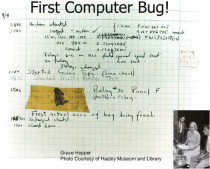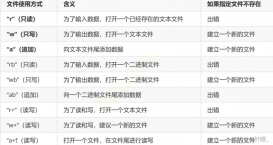前言
RTTI是”Runtime Type Information”的縮寫,意思是運行時類型信息,它提供了運行時確定對象類型的方法。RTTI并不是什么新的東西,很早就有了這個技術,但是,在實際應用中使用的比較少而已。而我這里就是對RTTI進行總結,今天我沒有用到,并不代表這個東西沒用。學無止境,先從typeid函數開始講起。
typeid函數
typeid的主要作用就是讓用戶知道當前的變量是什么類型的,比如以下代碼:
#include <iostream>
#include <typeinfo>
using namespace std;
int main()
{
short s = 2;
unsigned ui = 10;
int i = 10;
char ch = 'a';
wchar_t wch = L'b';
float f = 1.0f;
double d = 2;
cout<<typeid(s).name()<<endl; // short
cout<<typeid(ui).name()<<endl; // unsigned int
cout<<typeid(i).name()<<endl; // int
cout<<typeid(ch).name()<<endl; // char
cout<<typeid(wch).name()<<endl; // wchar_t
cout<<typeid(f).name()<<endl; // float
cout<<typeid(d).name()<<endl; // double
return 0;
}
對于C++支持的內建類型,typeid能完全支持,我們通過調用typeid函數,我們就能知道變量的信息。對于我們自定義的結構體,類呢?
#include <iostream>
#include <typeinfo>
using namespace std;
class A
{
public:
void Print() { cout<<"This is class A."<<endl; }
};
class B : public A
{
public:
void Print() { cout<<"This is class B."<<endl; }
};
struct C
{
void Print() { cout<<"This is struct C."<<endl; }
};
int main()
{
A *pA1 = new A();
A a2;
cout<<typeid(pA1).name()<<endl; // class A *
cout<<typeid(a2).name()<<endl; // class A
B *pB1 = new B();
cout<<typeid(pB1).name()<<endl; // class B *
C *pC1 = new C();
C c2;
cout<<typeid(pC1).name()<<endl; // struct C *
cout<<typeid(c2).name()<<endl; // struct C
return 0;
}
是的,對于我們自定義的結構體和類,tpyeid都能支持。在上面的代碼中,在調用完typeid之后,都會接著調用name()函數,可以看出typeid函數返回的是一個結構體或者類,然后,再調用這個返回的結構體或類的name成員函數;其實,typeid是一個返回類型為type_info類型的函數。那么,我們就有必要對這個type_info類進行總結一下,畢竟它實際上存放著類型信息。
type_info類
去掉那些該死的宏,在Visual Studio 2012中查看type_info類的定義如下:
class type_info
{
public:
virtual ~type_info();
bool operator==(const type_info& _Rhs) const; // 用于比較兩個對象的類型是否相等
bool operator!=(const type_info& _Rhs) const; // 用于比較兩個對象的類型是否不相等
bool before(const type_info& _Rhs) const;
// 返回對象的類型名字,這個函數用的很多
const char* name(__type_info_node* __ptype_info_node = &__type_info_root_node) const;
const char* raw_name() const;
private:
void *_M_data;
char _M_d_name[1];
type_info(const type_info& _Rhs);
type_info& operator=(const type_info& _Rhs);
static const char * _Name_base(const type_info *,__type_info_node* __ptype_info_node);
static void _Type_info_dtor(type_info *);
};
在type_info類中,復制構造函數和賦值運算符都是私有的,同時也沒有默認的構造函數;所以,我們沒有辦法創建type_info類的變量,例如type_info A;這樣是錯誤的。那么typeid函數是如何返回一個type_info類的對象的引用的呢?我在這里不進行討論,思路就是類的友元函數。
typeid函數的使用
typeid使用起來是非常簡單的,常用的方式有以下兩種:
1.使用type_info類中的name()函數返回對象的類型名稱
就像上面的代碼中使用的那樣;但是,這里有一點需要注意,比如有以下代碼:
#include <iostream>
#include <typeinfo>
using namespace std;
class A
{
public:
void Print() { cout<<"This is class A."<<endl; }
};
class B : public A
{
public:
void Print() { cout<<"This is class B."<<endl; }
};
int main()
{
A *pA = new B();
cout<<typeid(pA).name()<<endl; // class A *
cout<<typeid(*pA).name()<<endl; // class A
return 0;
}
我使用了兩次typeid,但是兩次的參數是不一樣的;輸出結果也是不一樣的;當我指定為pA時,由于pA是一個A類型的指針,所以輸出就為class A *;當我指定*pA時,它表示的是pA所指向的對象的類型,所以輸出的是class A;所以需要區分typeid(*pA)和typeid(pA)的區別,它們兩個不是同一個東西;但是,這里又有問題了,明明pA實際指向的是B,為什么得到的卻是class A呢?我們在看下一段代碼:
#include <iostream>
#include <typeinfo>
using namespace std;
class A
{
public:
virtual void Print() { cout<<"This is class A."<<endl; }
};
class B : public A
{
public:
void Print() { cout<<"This is class B."<<endl; }
};
int main()
{
A *pA = new B();
cout<<typeid(pA).name()<<endl; // class A *
cout<<typeid(*pA).name()<<endl; // class B
return 0;
}
好了,我將Print函數變成了虛函數,輸出結果就不一樣了,這說明什么?這就是RTTI在搗鬼了,當類中不存在虛函數時,typeid是編譯時期的事情,也就是靜態類型,就如上面的cout<<typeid(*pA).name()<<endl;輸出class A一樣;當類中存在虛函數時,typeid是運行時期的事情,也就是動態類型,就如上面的cout<<typeid(*pA).name()<<endl;輸出class B一樣,關于這一點,我們在實際編程中,經常會出錯,一定要謹記。
2.使用type_info類中重載的==和!=比較兩個對象的類型是否相等
這個會經常用到,通常用于比較兩個帶有虛函數的類的對象是否相等,例如以下代碼:
#include <iostream>
#include <typeinfo>
using namespace std;
class A
{
public:
virtual void Print() { cout<<"This is class A."<<endl; }
};
class B : public A
{
public:
void Print() { cout<<"This is class B."<<endl; }
};
class C : public A
{
public:
void Print() { cout<<"This is class C."<<endl; }
};
void Handle(A *a)
{
if (typeid(*a) == typeid(A))
{
cout<<"I am a A truly."<<endl;
}
else if (typeid(*a) == typeid(B))
{
cout<<"I am a B truly."<<endl;
}
else if (typeid(*a) == typeid(C))
{
cout<<"I am a C truly."<<endl;
}
else
{
cout<<"I am alone."<<endl;
}
}
int main()
{
A *pA = new B();
Handle(pA);
delete pA;
pA = new C();
Handle(pA);
return 0;
}
這是一種用法,呆會我再總結如何使用dynamic_cast來實現同樣的功能。
dynamic_cast的內幕
在這篇《static_cast、dynamic_cast、const_cast和reinterpret_cast總結》的文章中,也介紹了dynamic_cast的使用,對于dynamic_cast到底是如何實現的,并沒有進行說明,而這里就要對于dynamic_cast的內幕一探究竟。首先來看一段代碼:
#include <iostream>
#include <typeinfo>
using namespace std;
class A
{
public:
virtual void Print() { cout<<"This is class A."<<endl; }
};
class B
{
public:
virtual void Print() { cout<<"This is class B."<<endl; }
};
class C : public A, public B
{
public:
void Print() { cout<<"This is class C."<<endl; }
};
int main()
{
A *pA = new C;
//C *pC = pA; // Wrong
C *pC = dynamic_cast<C *>(pA);
if (pC != NULL)
{
pC->Print();
}
delete pA;
}
在上面代碼中,如果我們直接將pA賦值給pC,這樣編譯器就會提示錯誤,而當我們加上了dynamic_cast之后,一切就ok了。那么dynamic_cast在后面干了什么呢?
dynamic_cast主要用于在多態的時候,它允許在運行時刻進行類型轉換,從而使程序能夠在一個類層次結構中安全地轉換類型,把基類指針(引用)轉換為派生類指針(引用)。我在《COM編程——接口的背后》這篇博文中總結的那樣,當類中存在虛函數時,編譯器就會在類的成員變量中添加一個指向虛函數表的vptr指針,每一個class所關聯的type_info object也經由virtual table被指出來,通常這個type_info object放在表格的第一個slot。當我們進行dynamic_cast時,編譯器會幫我們進行語法檢查。如果指針的靜態類型和目標類型相同,那么就什么事情都不做;否則,首先對指針進行調整,使得它指向vftable,并將其和調整之后的指針、調整的偏移量、靜態類型以及目標類型傳遞給內部函數。其中最后一個參數指明轉換的是指針還是引用。兩者唯一的區別是,如果轉換失敗,前者返回NULL,后者拋出bad_cast異常。對于在typeid函數的使用中所示例的程序,我使用dynamic_cast進行更改,代碼如下:
#include <iostream>
#include <typeinfo>
using namespace std;
class A
{
public:
virtual void Print() { cout<<"This is class A."<<endl; }
};
class B : public A
{
public:
void Print() { cout<<"This is class B."<<endl; }
};
class C : public A
{
public:
void Print() { cout<<"This is class C."<<endl; }
};
void Handle(A *a)
{
if (dynamic_cast<B*>(a))
{
cout<<"I am a B truly."<<endl;
}
else if (dynamic_cast<C*>(a))
{
cout<<"I am a C truly."<<endl;
}
else
{
cout<<"I am alone."<<endl;
}
}
int main()
{
A *pA = new B();
Handle(pA);
delete pA;
pA = new C();
Handle(pA);
return 0;
}
這個是使用dynamic_cast進行改寫的版本。實際項目中,這種方法會使用的更多點。
總結
我在這里總結了RTTI的相關知識,希望大家看懂了。這篇博文有點長,希望大家也耐心的看。總結了就會有收獲。














